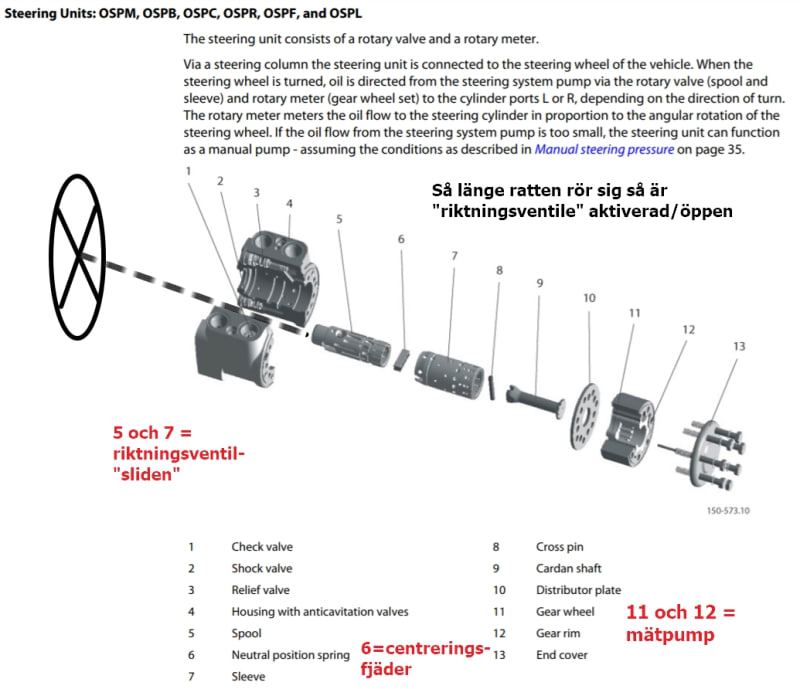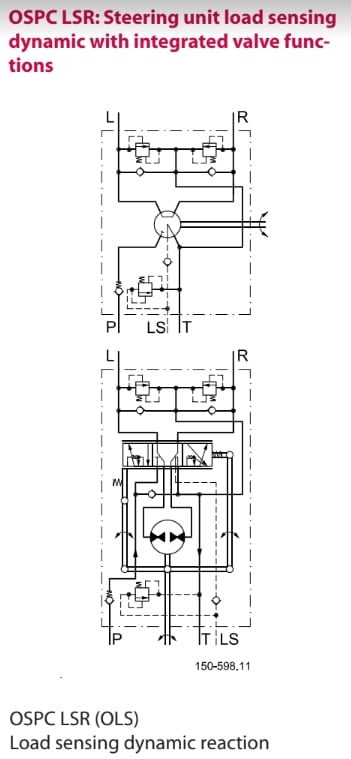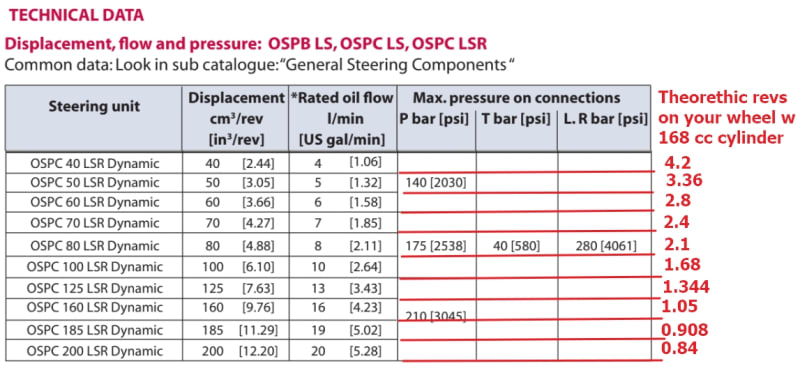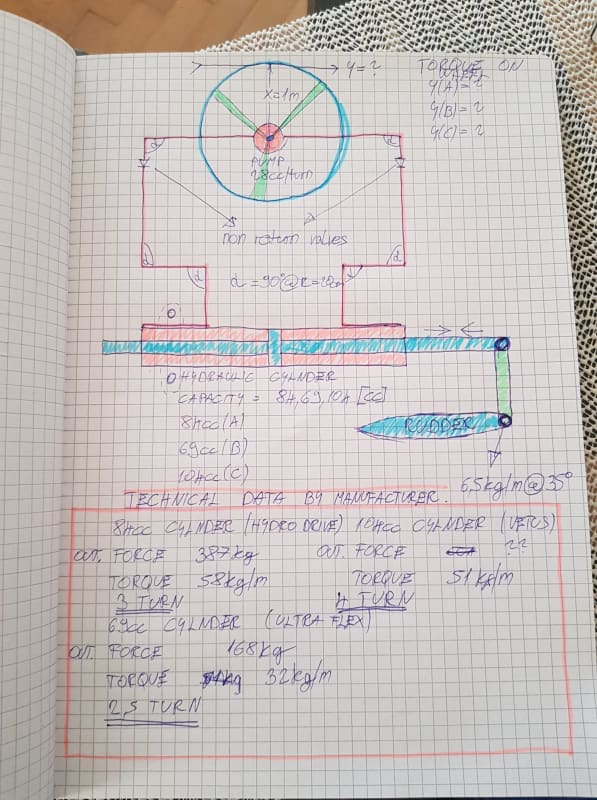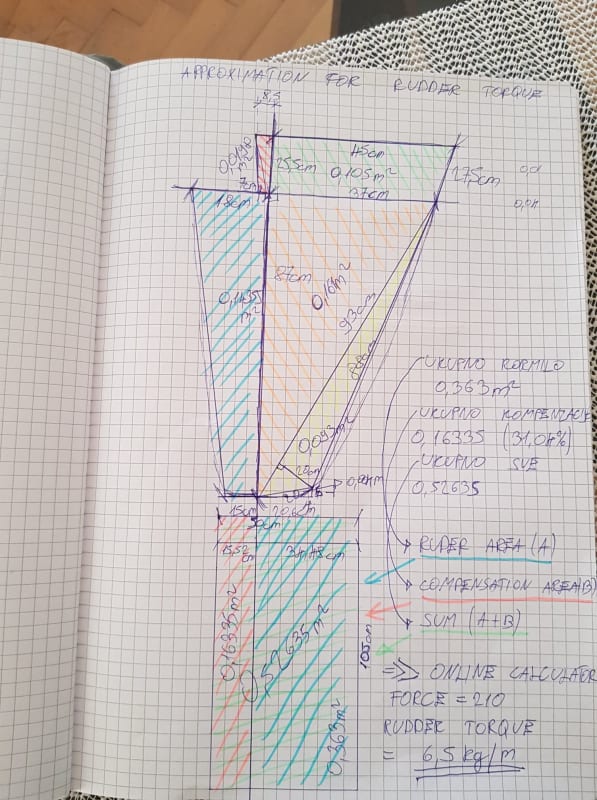marinovich.91
Marine/Ocean
Hi to everyone, first I wil try to put here my current system, then what I would try to do and then couple of questions. This may be a big thread but my apopogies.
The current problem on my sailboat is that somebody before I bought it had putted hyrdaulic steering on 31 foot boat, and made couple of mistakes along the way.
So courrent setup is that i have:
28cc/turn steering helm pum connected to 70cm diameter steering wheel - axial piston pump
168cc capacity steering hydraulic cylnder
System max press 70bar
This gives me 6 turns from end to end, and main problem is that I dont feel the rudder at all(no feedback). I have been googling it a lot and found that there is couple of solutions.
Before I continiue I must mention that I have raymarine EV100 Autopilot connceted to my steering wheel over Autopilot wheel attached to it(with small electromotor)
So to get any feedback from rudder I found that I need to remove checkball’s from nonreturn valve system on helm pump(80% sure). So fluid from my steering cylnder can influence steering wheel.
At current system I dont need use any effort to turn the wheel and when there is rough sea, sailboat is behaveing like local drunk, since I cant chatch the boat>>There is no feeling and 6. turns from end to end.
Manovering is story for its own.
Solution for this is downsizing hydraulic cylinder or buying bigger capacity pump. Since I dont have space, and hy. cylnder is cheaper to change I decided to change the cylnder.
The main problem arise when I contacted Seastar tech. support about it.
He told me downsizeing the cylnder effort on steering wheel incrises a lot. (a lot is the main problem).
Recently I calculated my rudder torque by calculateing area an running it in calculator and got 6kg/m. Pictures attached, Calculator web site is on this link..
Calculator gave me:
Force of 210
Rudder torque of 6kg/m
I am not sure since there isnt any units; what this should mean
Solution 1.
I would like to go for 69cm3 (2.5 turns) capacity of hydraulic cylnder but I dont know if my autopilot will be able to handle it becouse friction of fluids and pump. As well max torque of cylnder is 32 kg/m but output force is 170kg.
Solution 2.
Another option is to go for 84cm3 (3 turns) capacity of hydraulic cylnder but I dont know if my autopilot will be able to handle it becouse friction of fluids and pump. As well max torque of cylnder is 58 kg/m but output force is 387 kg.
Lady in Hydrodrive told me:
On application 28cc pump and 84cm3 cylinder, on shaft pump, to reach the max pressure, needed a torque of 42 Nm on pump shaft.What does this mean if my max torque from rudder is 6kg/m?
But I want the feedback as well.
The main question is how to calculate how much stiff my steering wheel is going to be, since I want it to be just on border so my autopilot can handle it, to have feedback, as little as possible turns and normal effort steering.
Thank you for your Help and time
The current problem on my sailboat is that somebody before I bought it had putted hyrdaulic steering on 31 foot boat, and made couple of mistakes along the way.
So courrent setup is that i have:
28cc/turn steering helm pum connected to 70cm diameter steering wheel - axial piston pump
168cc capacity steering hydraulic cylnder
System max press 70bar
This gives me 6 turns from end to end, and main problem is that I dont feel the rudder at all(no feedback). I have been googling it a lot and found that there is couple of solutions.
Before I continiue I must mention that I have raymarine EV100 Autopilot connceted to my steering wheel over Autopilot wheel attached to it(with small electromotor)
So to get any feedback from rudder I found that I need to remove checkball’s from nonreturn valve system on helm pump(80% sure). So fluid from my steering cylnder can influence steering wheel.
At current system I dont need use any effort to turn the wheel and when there is rough sea, sailboat is behaveing like local drunk, since I cant chatch the boat>>There is no feeling and 6. turns from end to end.
Manovering is story for its own.
Solution for this is downsizing hydraulic cylinder or buying bigger capacity pump. Since I dont have space, and hy. cylnder is cheaper to change I decided to change the cylnder.
The main problem arise when I contacted Seastar tech. support about it.
He told me downsizeing the cylnder effort on steering wheel incrises a lot. (a lot is the main problem).
Recently I calculated my rudder torque by calculateing area an running it in calculator and got 6kg/m. Pictures attached, Calculator web site is on this link..
Calculator gave me:
Force of 210
Rudder torque of 6kg/m
I am not sure since there isnt any units; what this should mean
Solution 1.
I would like to go for 69cm3 (2.5 turns) capacity of hydraulic cylnder but I dont know if my autopilot will be able to handle it becouse friction of fluids and pump. As well max torque of cylnder is 32 kg/m but output force is 170kg.
Solution 2.
Another option is to go for 84cm3 (3 turns) capacity of hydraulic cylnder but I dont know if my autopilot will be able to handle it becouse friction of fluids and pump. As well max torque of cylnder is 58 kg/m but output force is 387 kg.
Lady in Hydrodrive told me:
On application 28cc pump and 84cm3 cylinder, on shaft pump, to reach the max pressure, needed a torque of 42 Nm on pump shaft.What does this mean if my max torque from rudder is 6kg/m?
But I want the feedback as well.
The main question is how to calculate how much stiff my steering wheel is going to be, since I want it to be just on border so my autopilot can handle it, to have feedback, as little as possible turns and normal effort steering.
Thank you for your Help and time

![[smile] [smile] [smile]](/data/assets/smilies/smile.gif) It is ok to use rudder angle metter when sea is calm and quiet but ar rough sea you need as much feedback as possible to mentain direction esspecialy when sailing, you must hold the boat on line in between uncontroled and controled sailing(let say like this but it is profesion of its own.
It is ok to use rudder angle metter when sea is calm and quiet but ar rough sea you need as much feedback as possible to mentain direction esspecialy when sailing, you must hold the boat on line in between uncontroled and controled sailing(let say like this but it is profesion of its own. 